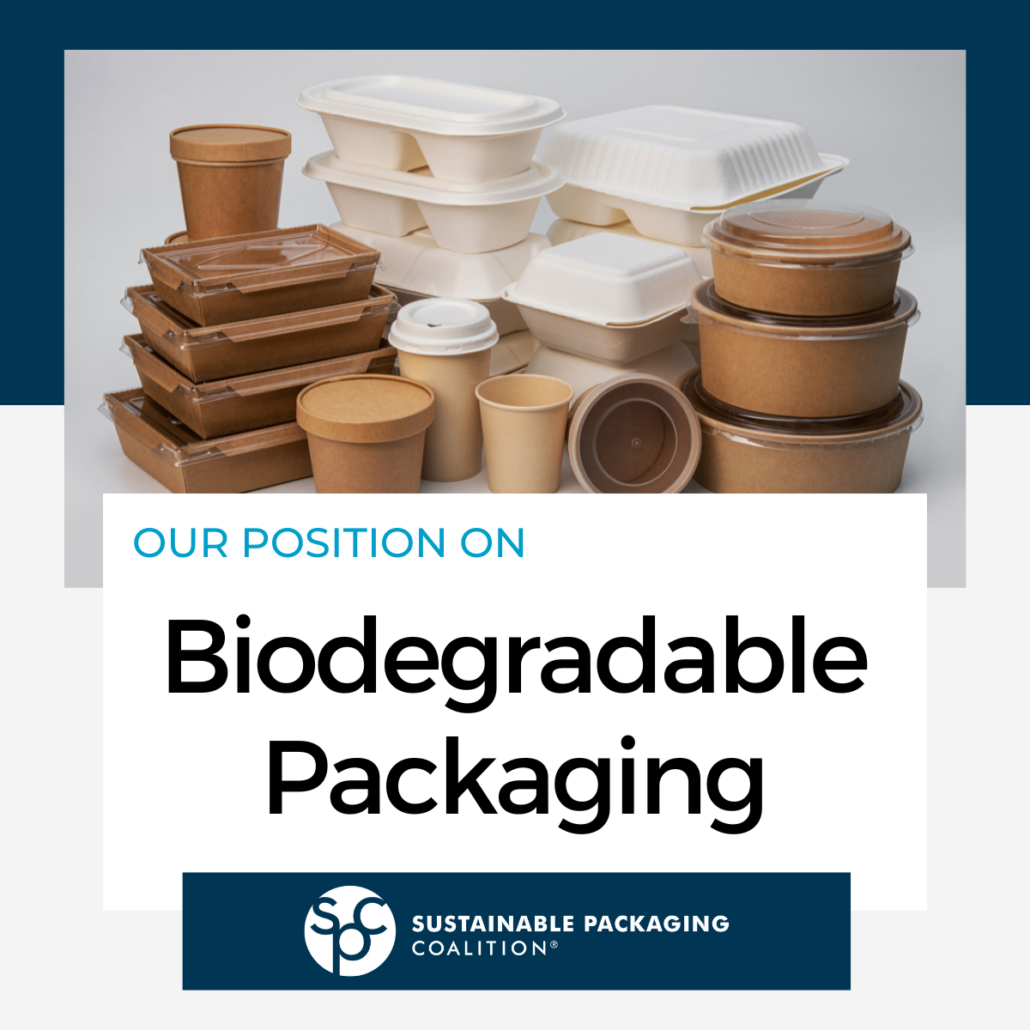The SPC recommends that packaging companies do not use the term “biodegradable” to market their products to suppliers, retailers, or consumers. The SPC further recommends that companies do not design packaging to be broadly biodegradable, unless a specific application such as soil biodegradability has been tested and makes sense for the specific application, e.g. in the case of agricultural films. The SPC’s rationale is outlined below.
1. “Biodegradable” is a confusing and imprecise term.
-
- “Biodegradable” refers to materials that have the ability to break down by biological means into the raw materials of nature. On its own, the term does not indicate a specific time frame or environment for when a product will break down. Learn more here.
- “Compostable” refers to materials that meet third-party standards and yield carbon dioxide, water, inorganic compounds, and biomass at a rate consistent with the biodegradation of natural food materials, while leaving no distinguishable remnants or unacceptable levels of toxic residues.
- “Bio-based” refers to products that are derived from raw materials such as plants and other renewable agricultural, marine, and forestry materials. It explains the origins of a product (i.e. how it was sourced), not what will happen to it at its end-of-life.
Companies should use the most specific term that applies to their packaging; e.g. if the packaging has been certified compostable, use the term “compostable” rather than “biodegradable”.
2. Biodegradability marketing claims are increasingly unlawful.
It is illegal in California, Maryland, Minnesota, and Washington to use the term “biodegradable” in marketing claims related to plastic products and/or bags. The Federal Trade Commission’s “Green Guides” also offer guidance on how marketers should avoid using these terms in ways that lead to consumer deception, and explicitly state that “Unqualified degradable claims for items that are customarily disposed in landfills, incinerators, and recycling facilities are deceptive because these locations do not present condition in which complete decomposition will occur within one year.”
3. Biodegradable packaging does not align with third-party certification programs.
Third-party certification programs for compostable packaging, such as BPI, stress the importance of designing packaging to ASTM standards for compostability and verifying degradation with third-party testing. BPI has issued labeling guidelines for companies that emphasize the importance of clear, specific labeling on packaging. GreenBlue’s How2Compost program requires that a package first be BPI certified before it can receive the How2Compost label.
Learn more: SPC’s Guide to Understanding the Role of Compostable Packaging
4. Biodegradable packaging can contribute to littering and consumer confusion.
Consumer research indicates that the term “biodegradable” is not well understood by consumers, and can result in consumers discarding packaging on the ground (littering). It is unclear what will happen to the packaging when it is thus discarded in the open environment because of the immense range of climatic conditions; as a result, this behavior should be discouraged.
For more on biodegradability additives, please see the SPC’s Position on Degradability Additives.
To learn more, contact spcinfo@greenblue.org.


